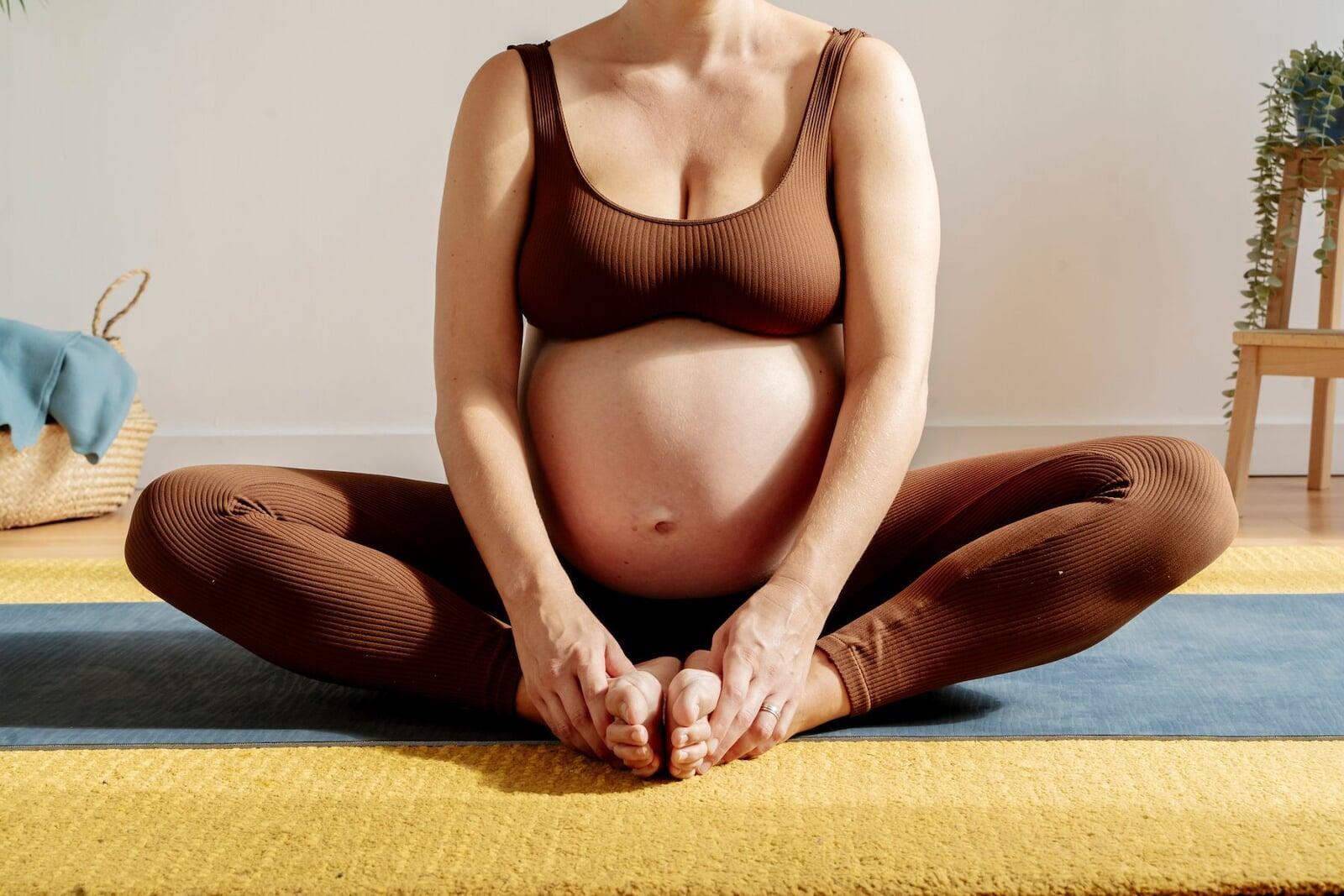Strengthening and Releasing Tension
Strengthening and Releasing Tension

Pregnancy is a time of significant physical and emotional transformation. As your body adjusts to accommodate the growing baby, it's essential to prioritize your pelvic health and well-being. One of the most beneficial practices for maintaining pelvic floor strength, flexibility, and relaxation during pregnancy is prenatal yoga.
Prenatal yoga offers a holistic approach to physical health, mental clarity, and stress reduction, all while fostering a deep connection with your body and baby. In this blog post, we’ll explore how prenatal yoga benefits pelvic health, the key poses to incorporate into your routine, and why it’s such an important part of pregnancy care.
What is Prenatal Yoga?
Prenatal yoga is a modified form of traditional yoga designed specifically for pregnant women. It focuses on gentle movements, stretches, breathing exercises, and relaxation techniques tailored to the physical and emotional needs of pregnancy. Unlike regular yoga, prenatal yoga classes take into account the anatomical changes that occur as pregnancy progresses and aim to offer both strengthening and relaxing exercises to support the body’s transitions.
The practice can be adapted to any stage of pregnancy, making it a safe and effective way to stay active, improve pelvic health, and manage the physical discomforts of pregnancy.
Why is Prenatal Yoga Important for Pelvic Health?
The pelvic floor is a group of muscles that support the bladder, uterus, rectum, and small intestine. During pregnancy, these muscles are under increasing pressure as the uterus grows and the body prepares for labor. Prenatal yoga can play an essential role in supporting pelvic floor function, reducing discomfort, and preparing for childbirth.
1. Improving Pelvic Floor Strength
While Kegel exercises are commonly recommended for strengthening the pelvic floor, yoga also offers movements that engage the pelvic floor muscles in a more dynamic, functional way. Prenatal yoga helps activate these muscles through poses that focus on core engagement, deep breathing, and posture alignment.
- Strengthening the pelvic floor during pregnancy helps reduce the risk of incontinence and pelvic organ prolapse later in pregnancy or postpartum.
- It also prepares the pelvic floor for labor by teaching you how to engage and relax the pelvic muscles during contractions and the pushing stage.
2. Releasing Tension and Reducing Pelvic Pain
Pregnancy-related pelvic pain is common, especially as the body experiences hormonal changes and increased weight-bearing. Prenatal yoga can help release tension in the pelvic muscles, hip flexors, and lower back, which often bear the brunt of the physical changes that occur.
- Hip openers like Bound Angle Pose (Baddha Konasana) and Reclined Butterfly can alleviate tightness in the groin, pelvis, and lower back, promoting better alignment and comfort.
- The gentle stretches offered in yoga can help reduce sciatic pain and pubic symphysis pain, both of which are common during pregnancy due to hormonal changes in the pelvic area.
3. Promoting Proper Posture and Alignment
As pregnancy progresses, the center of gravity shifts, leading to changes in posture. This can lead to muscle imbalances, lower back pain, and strain on the pelvic floor. Prenatal yoga encourages postural awareness and alignment, helping to counteract the effects of postural changes and relieve undue stress on the pelvic region.
- Poses like Mountain Pose (Tadasana) and Warrior II (Virabhadrasana II) encourage standing with a tall spine, proper pelvis positioning, and a stable foundation, which can reduce strain on the pelvic floor muscles and back.
- Yoga also promotes awareness of breathing mechanics, which can enhance diaphragmatic breathing and support the natural alignment of the pelvic floor muscles.
4. Relieving Stress and Anxiety
The mind-body connection is central to prenatal yoga. Stress and anxiety can increase tension in the pelvic floor, potentially leading to discomfort, muscle tightness, and even pelvic pain. Prenatal yoga focuses on relaxation techniques, deep breathing, and mindfulness, which can help reduce the physical effects of stress on the body.
- Yoga's emphasis on relaxation can activate the parasympathetic nervous system, helping to reduce cortisol levels and calm the mind.
- Breathing exercises like ujjayi pranayama (victorious breath) and deep belly breathing help release tension in the pelvic floor and encourage relaxation throughout the entire body.
Key Prenatal Yoga Poses for Pelvic Health
Here are some of the most beneficial yoga poses to incorporate into your prenatal practice to support pelvic health:
1. Cat-Cow Pose (Marjaryasana-Bitilasana)
- Benefits: This pose gently stretches and strengthens the lower back and pelvic floor, improving mobility and reducing back pain.
- How to do it: Start on all fours, with your wrists directly under your shoulders and your knees under your hips. Inhale as you arch your back (cow pose) and exhale as you round your back (cat pose), gently tilting your pelvis with each movement.
2. Butterfly Pose (Baddha Konasana)
- Benefits: This hip opener helps release tension in the groin and lower back, which can be beneficial for relieving pelvic discomfort.
- How to do it: Sit with your feet together and knees bent out to the sides. Hold your feet with your hands and gently press your knees toward the ground, feeling a stretch along your inner thighs.
3. Squat Pose (Malasana)
- Benefits: This pose helps open the hips and release tension in the lower back and pelvis, preparing the body for labor.
- How to do it: Stand with your feet slightly wider than hip-width apart and squat down, keeping your heels on the floor. Place your elbows on the inside of your knees and bring your palms together at your chest. Hold the position and focus on deep breathing.
4. Child’s Pose (Balasana)
- Benefits: Child’s Pose is a restorative pose that allows the pelvic muscles to relax and the lower back to gently stretch. It also helps reduce stress and anxiety.
- How to do it: Start on your hands and knees, then slowly sit back on your heels, lowering your forehead to the mat. Keep your knees wide to create space for your belly.
5. Pelvic Tilts (Standing or on Hands and Knees)
- Benefits: Pelvic tilts strengthen the core and pelvic floor muscles while improving mobility in the pelvis and lower back.
- How to do it: Stand with your feet hip-width apart or get on all fours. Inhale as you tilt your pelvis forward, then exhale as you tilt your pelvis back. Repeat for several breaths.
6. Seated Forward Fold (Paschimottanasana)
- Benefits: This pose stretches the hamstrings and lower back while encouraging deep breathing and pelvic relaxation.
- How to do it: Sit with your legs extended straight in front of you. Inhale to lengthen your spine and exhale to gently fold forward, keeping your back straight and avoiding any strain on the pelvis.
Tips for Practicing Prenatal Yoga Safely
- Consult Your Healthcare Provider: Before starting any new exercise program, including prenatal yoga, check with your doctor or midwife to ensure it’s safe for you.
- Avoid Overstretching: Pregnancy hormones like relaxin cause ligaments and joints to become more flexible. Be mindful of not pushing yourself too hard in stretches to avoid injury.
- Listen to Your Body: Pregnancy is not the time to challenge yourself with advanced poses. Focus on gentle, supportive movements that feel good for your body.
- Find a Certified Prenatal Yoga Instructor: Look for a qualified yoga teacher who specializes in prenatal care to guide you through safe and effective movements.
Conclusion
Prenatal yoga is a powerful tool for maintaining pelvic health throughout pregnancy. It not only helps strengthen and relax the pelvic floor muscles but also supports overall physical and emotional well-being. By incorporating gentle movements, breathing exercises, and relaxation techniques into your routine, you can reduce discomfort, prepare for labor, and improve your connection with your body and your baby.
If you’re new to prenatal yoga or have concerns about your pelvic health, it’s a great idea to consult a pelvic physiotherapist who can help guide you through pelvic-specific exercises and provide additional support for your practice.


